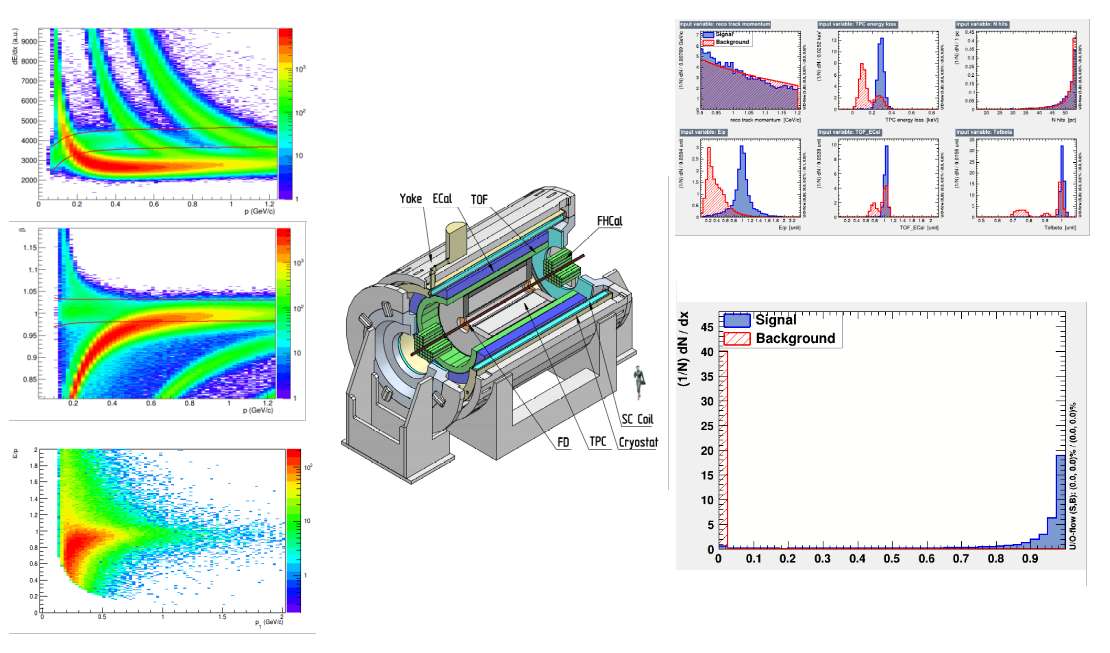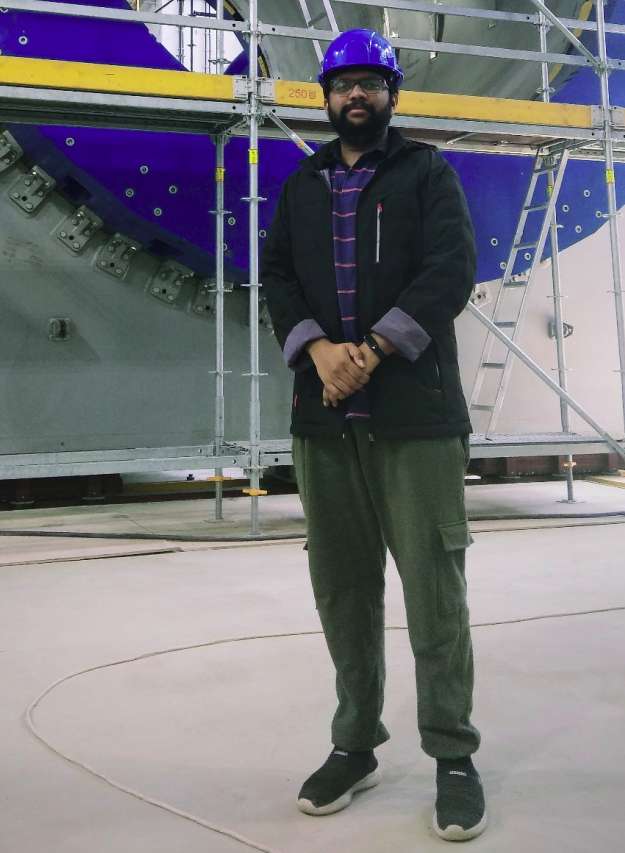MPD experiment at newly constructed NICA accelerator complex at JINR (Dubna) is gearing up for data taking in 2026. For the proper optimization of the facility and the experiment, the detector performance in terms of event and track reconstruction as well as particle identification using dedicated Monte-Carlo should be studied in detail. The principal objective of this project is to learn how these simulation and reconstruction procedures work and optimize the electron identification performance of MPD sub-detector systems.
Tasks
Every item is a separate task for each participant:
1. Optimization of selection cuts to identify the electrons using various MPD sub-detectors such as Time Projection Chamber (TPC), Time of flight (TOF) detector and Electromagnetic Calorimeter (Ecal).
2. Improving electron identification performance of MPD detector using various Machine Learning techniques in ROOT framework.
Preliminary schedule by topics/tasks
Week 1: Introductory lectures about heavy-ion collisions, NICA complex, MPD experiment, and MPDRoot framework.
Weeks 2-3: Installing MPDRoot, running MPDRoot macros, generating statistics, learning/analyzing outputs of the simulation and reconstruction tasks for A+A collisions.
Weeks 4-5: Optimization of eID performance of MPD detector using Cut based and ML methods.
Week 6: preparation of the final report.
Required skills
Mandatory: General Physics and courses on Nuclear Physics, good knowledge of C++, Familiarity with Linux. Notebook or PC with Linux installed (Ubuntu 24.04, 22.04, 20.04 are preferable) + sufficient disk space for the MPDRoot installation and data storage (> 100 GB).
Desirable: Basic knowledge about heavy-ion collisions and detectors. Familiarity with CERN ROOT framework. Try to install MPDROOT by following the instructions on https://mpdroot.jinr.ru/running-mpdroot-on-local-machine-using-cvmfs/
Acquired skills and experience
The participant will be introduced to heavy-ion collisions. Opportunity to learn the methods of particle identification used in heavy-ion experiment. Get familiar with detector simulation, data analysis and Machine learning applications in high energy physics.
Recommended literature
1. Book: “Ultrarelativistic Heavy-Ion Collisions” by Ramona Vogt.
2. Kekelidze V.D. et al. “Three stages of the NICA accelerator complex”, Eur. Phys. J. A (2016) 52, 211.
3. Abgaryan, V. et al. ( MPD Collaboration) “Status and initial physics performance studies of the MPD experiment at NICA”, Eur. Phys. J. A (2022) 58, 140.
4. Raghunath Sahoo. “Relativistic Kinematics”. E-print: 1604.02651 [nucl-ex] https://arxiv.org/pdf/1604.02651.pdf
5. http://mpd.jinr.ru, https://mpdroot.jinr.ru/ and https://root.cern/manual/tmva/



